Written by Erin Murphy, Director of Education and Advocacy Network at the YWCA Seattle I King I Snohomish.
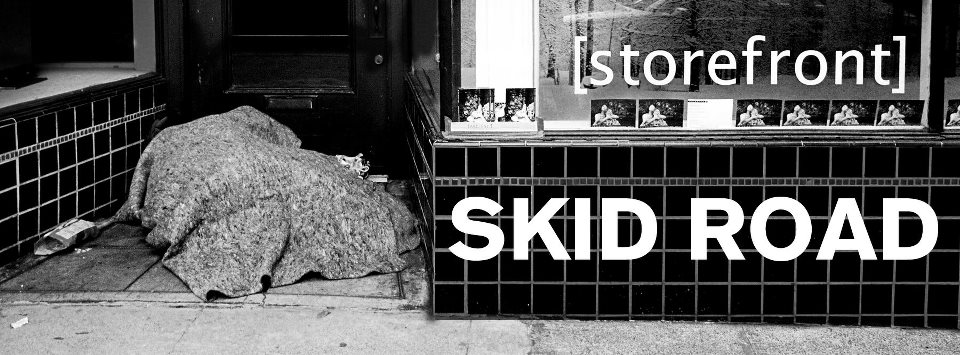
Olson Kundig Architects, an architecture firm in Pioneer Square, Seattle, rents out the storefront of their building and showcases rotating exhibits for the public. Their current installation is a collaborative exhibit called SKID ROAD, inviting the public to learn more about homelessness and interact with the issue in new ways. The exhibit features multiple organizations that serve the homeless community in Pioneer Square or advocate to end homelessness. These exhibit partners are:
- Bread of Life Mission
- Chief Seattle Club
- Committee to End Homelessness in King County
- Seattle/King County Coalition on Homelessness
- Compass Housing Alliance
- DESC (formerly Downtown Emergency Service Center)
- Real Change
- Seattle Housing and Resource Effort (SHARE)
- Women’s Housing Equality and Enhancement League (WHEEL)
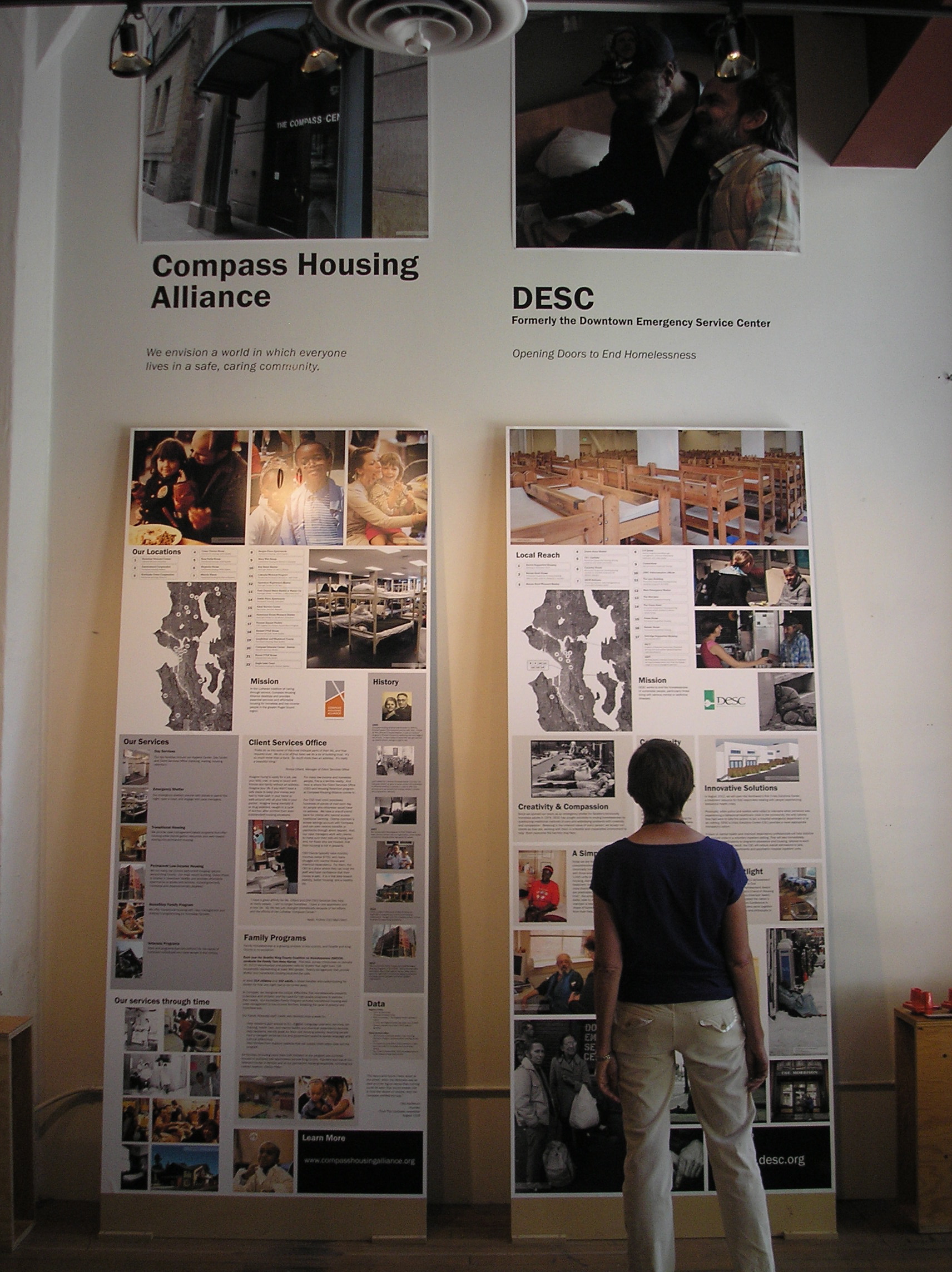
I visited SKID ROAD and sat down with the project coordinators, Alan Maskin and Marlene Chen to learn more about the exhibit. There have been at least two other great blog posts so far (HERE and HERE) with some great interview questions, so I tried to ask some complementary questions rather than be redundant!
How is homelessness perceived in your neighborhood?
Alan: Part of what this exhibit shows is that the challenge of poverty and homelessness in our neighborhood has existed over the past century. Homelessness is such a prevalent problem and so dire—but it is such a difficult problem that people tend to look away. One of the things we do with our storefront project is to present installations that compel people to look closer.
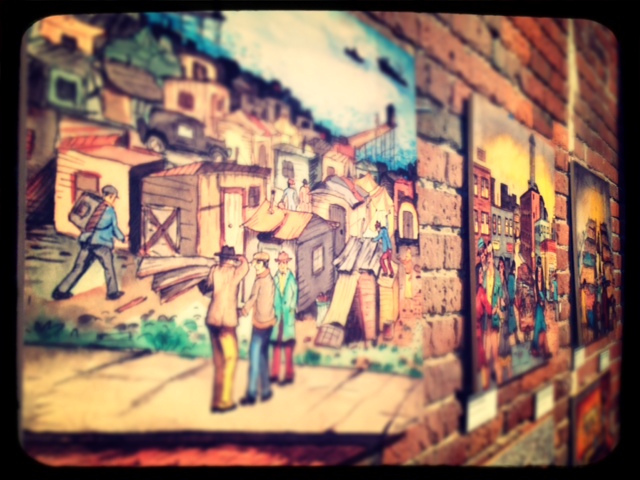
Images of depression era artist Ronald Debs Ginther‘s paintings of “Skid Road” in Pioneer Square help to put homelessness in a historical context. The parallels between Ginther’s paintings of Pioneer Square during the Great Depression and images of the homeless in this neighborhood today are striking; although, there is a contrast that occurs when you put Ginther’s images next to contemporary paintings by artist Mary Larson. Mary Larson and Ginther both painted the same neighborhood and the same population, but each artist portrays members of the homeless community in a very different way.
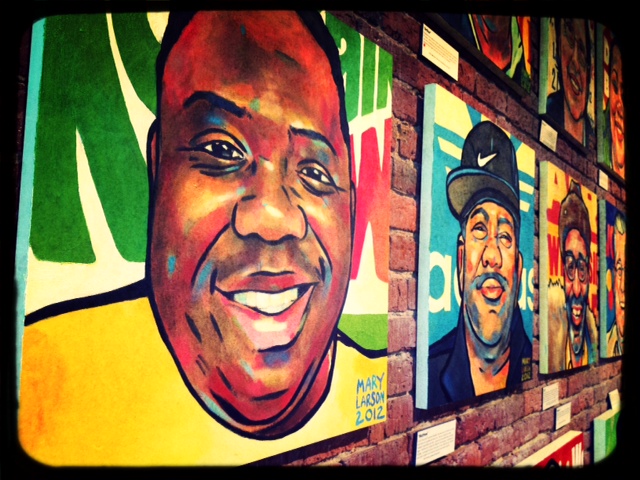
Something happens when you encounter Mary’s work. Technically, Mary doesn’t sell paintings for money; instead, she barters them for goods and services for her clients at the Pioneer Square clinic, where she is a nurse. Do you see that painting, upwards second from the right?
Erin: Adriana?
Alan: Yes, Adriana. You know Adriana?
Erin: I know the story behind it.
Alan: Ah, so you already know that there is a Seattle school that is going to be making thousands of sandwiches for their local homeless shelter in exchange for the painting that will hang in their school. Mary’s work turns these kids into young philanthropists.
Erin: Yes, a wonderful story [See our earlier blog post on this very story HERE]
Alan: An unexpected thing happened after SKID ROAD opened. Many of the people who sat for Mary’s portraits have come in. They hadn’t seen their portraits yet, so they were seeing them for the first time. When they walked in and saw their portraits….well, it was remarkable. Some have been returning and bringing friends or family members to see them. From a personal integrity aspect, what Mary does with her work is brilliant. The homeless are the population that never gets their portrait painted. By agreeing to let Mary paint them, they also share in the philanthropic aspect of Mary’s work. When I look at these paintings, what I see are people that look just like me. So it puts me into a place of imagining how close I might be to the homeless experience or could have been at different points in my life. From an empathy perspective, Mary’s works pulls me in.
How have you seen people interact differently with homelessness thanks to your exhibit?
Marlene: I’ve seen a couple of families come in and see Mary’s portraits and be really drawn to them. A lot of people really like to get real close to them. We talked a lot with the organizations about how to portray their work in a way that is honest to the seriousness of the issue but also not in a negative or pessimistic light. I’ve seen parents and kids come in and say, “Look, look at this man.” ….They read a little further and say, “Oh look! You can buy this for 75 pairs of shoes or 1,000 pairs of socks.” The child will usually be like, “Oooh, it’s not money that they want.”
The other effect that I’ve seen is organizations coming in and showing their work to other people and saying, “Look, here we are amongst all these other organizations.” Within an exhibit is not really a venue or way that these organizations have been displayed or discussed before. They often appear in media, print pieces, doing their own promotion but it’s not too often that they have been the subject of an exhibit.
[Tim Harris, Executive Director of Real Change walks in at this very moment, sharing the exhibit with someone as if to prove this point! Lots of hellos are exchanged]
Alan: I knew about Tim from Real Change, and I also knew Mary, but I learned about many of these other groups as we researched this project. Through the process of creating this exhibit, Marlene went to visit every single one of these organizations. It was a huge learning experience for us. If we had a superficial understanding of the organizations we’ve highlighted, it may be safe to assume many of those who walk in here do as well. I can’t think of a time when there has been a convening of these organizations in one place. If you think about it, we’ve got activists, artists, evangelical Christians, designers, often the public and homeless all convening in the same room, which is rare. That’s actually one of the goals of our storefront-to bring different worlds together to collide in this space.
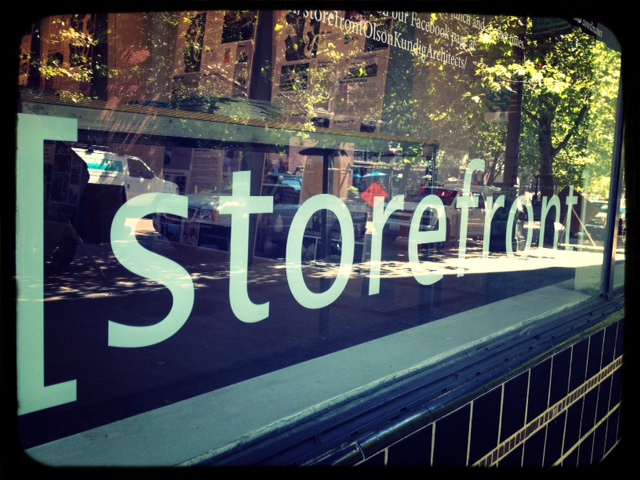
Marlene has been working with these organizations to develop a month-long series of programs, events, film screenings and community meetings. Each organization can suggest ways to use this space – it’s our job to just say “Yes!”
Can your exhibit be seen as a form of advocacy? If so, how?
Alan: I think it absolutely is a form of advocacy. We’ve tried to frame a dialogue where we allow different groups to share the same kind of information—sort of leveling the playing field. And, not every one of these group is in agreement on how to solve homelessness. They tend to work in two capacities. Some are working to ease the daily hardship of living on the streets, and some are actually working to eradicate homelessness altogether. Within those contexts, there is a shared goal but the approaches and strategies differ. Our editorial perspective was simply to frame a dialogue. We wanted different groups to come in and tell their story and to convene here. One editorial aspect that is included is evidenced by what the data that the One Night Count has shown us – thousands of people in our community are living on our streets.
[At this point, Alan shares that he is excited about what we are doing with Firesteel and offers the space for us to use as well–thanks guys!]
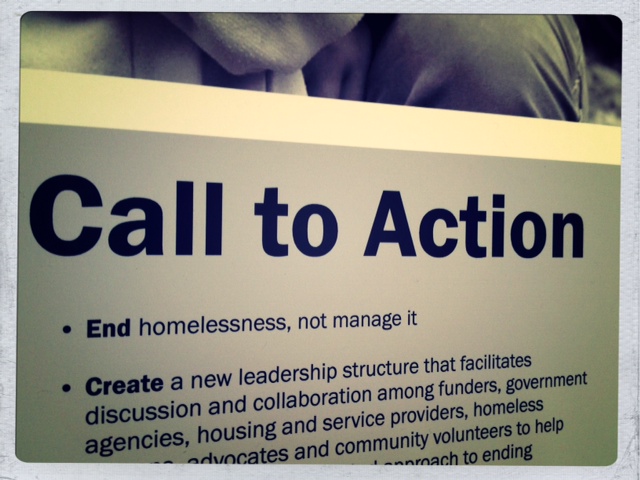
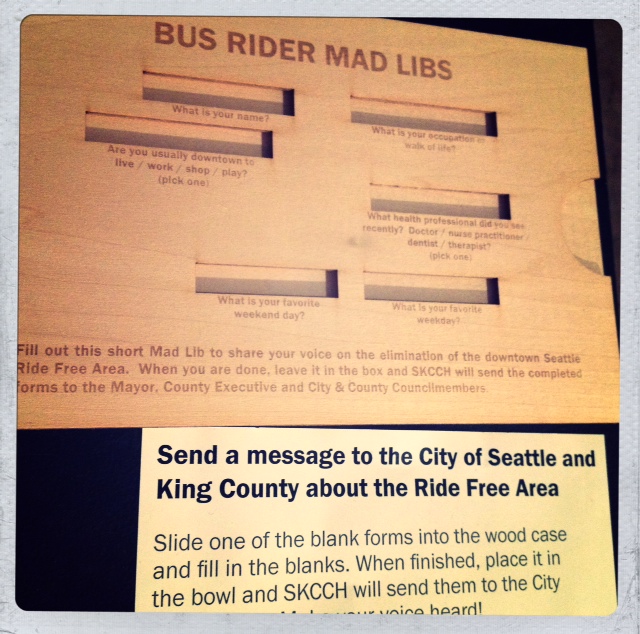
What do you hope happens after the exhibit is over?
Marlene: We have been attempting to try and get people in the same room together. We had a lot of energy around the opening night and it was like, “This is great! All these people rarely get together in the same spot!” I would love that conversation [to keep going]. For people to say, “Remember when we were in that exhibit, at the storefront?” and for us all to remember we are all trying to move towards the same goal. This show could easily pack up and go on the road. I think that there are a lot of other places that it could be seen. We focused on organizations that are in our neighborhood but there are so many more organizations. Going back to that perception of homelessness in Pioneer Square—that it’s an issue in Pioneer Square – really it’s a region wide issue. People are sleeping in their cars in Issaquah, and in Renton. You could format [this exhibit] for more organizations and neighborhoods and allow smaller organizations to be presented in a way that is alongside other organizations that might be bigger or have more resources.
Alan: Olson Kundig is an architecture firm. With our [storefront] project, we’ve discovered an aspect of social practice – but we fell into it backwards. We didn’t set out to do this with [storefront] but it just kind of became this. Your question is compelling to me because you are asking what it means in terms of our firm’s values and the work we create. Everyone in the firm participates at least on some level, from a volunteer aspect for each of the installations. I think that there is something about SKID ROAD – possibly because there is a person that sleeps in our doorway many nights. I think in five or ten years if you’d ask me that question, I have a feeling that I could say that SKID ROAD was seminal for us.
Thanks to Alan and Marlene for taking time during their lunch break to share their thoughts!
A Firesteel Call to Action:
1) Visit the exhibit: SKID ROAD is open TUES-FRI 11:30-1:30PM located at 406 Occidental Avenue South, Seattle, Washington 98104
2) Visit the exhibit on Tuesday, August 21st AND catch the Seattle King County Coalition On Homelessness film screening of “Out On A Limb.” As an exhibit partner, they are utilizing the space in this very cool way! I will be there and it will also be my birthday. So come join me for an advocacy birthday lunch!
3) Take the exhibit on the road and coordinate a local showing in your neighborhood. Alan and Marlene would love to see this happen! If you’d like to combine art and advocacy in this way, please contact Olson Kundig HERE.
Further Resources
- Olson Kundig’s Project Page on SKID ROAD
- Check out these other great blog posts on SKID ROAD: